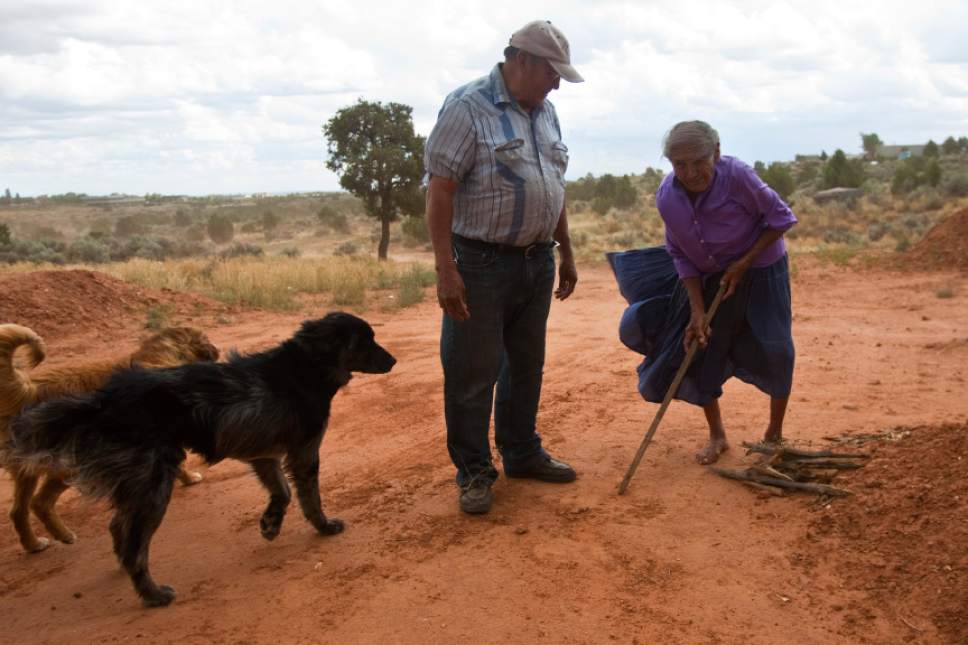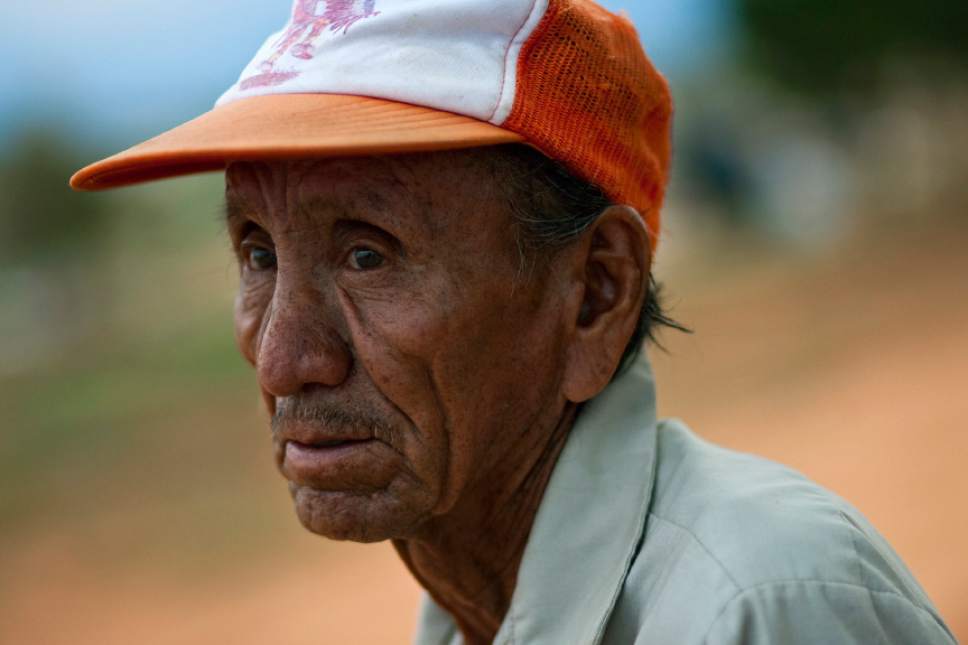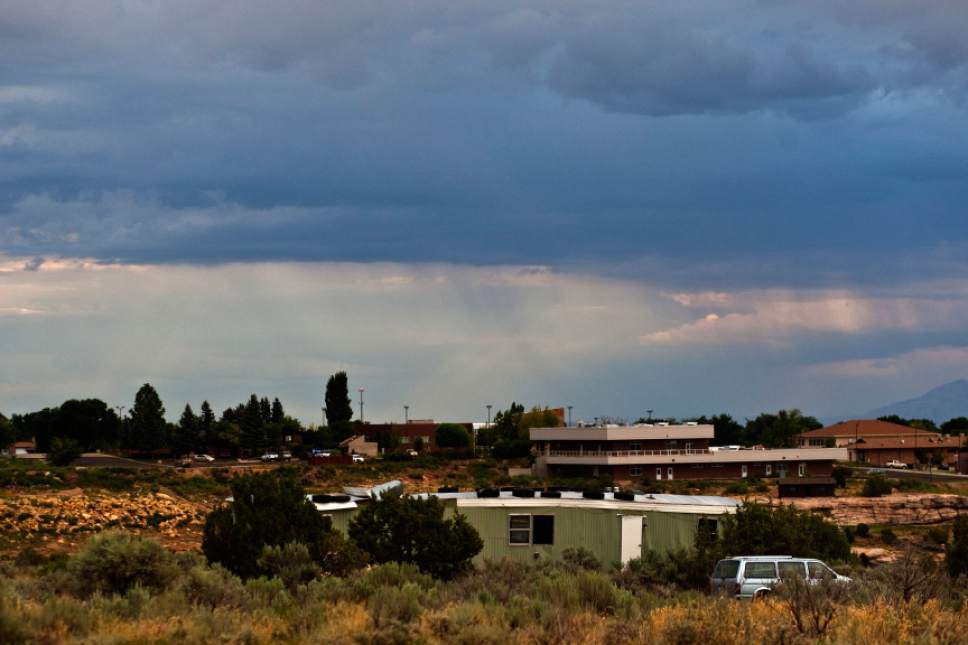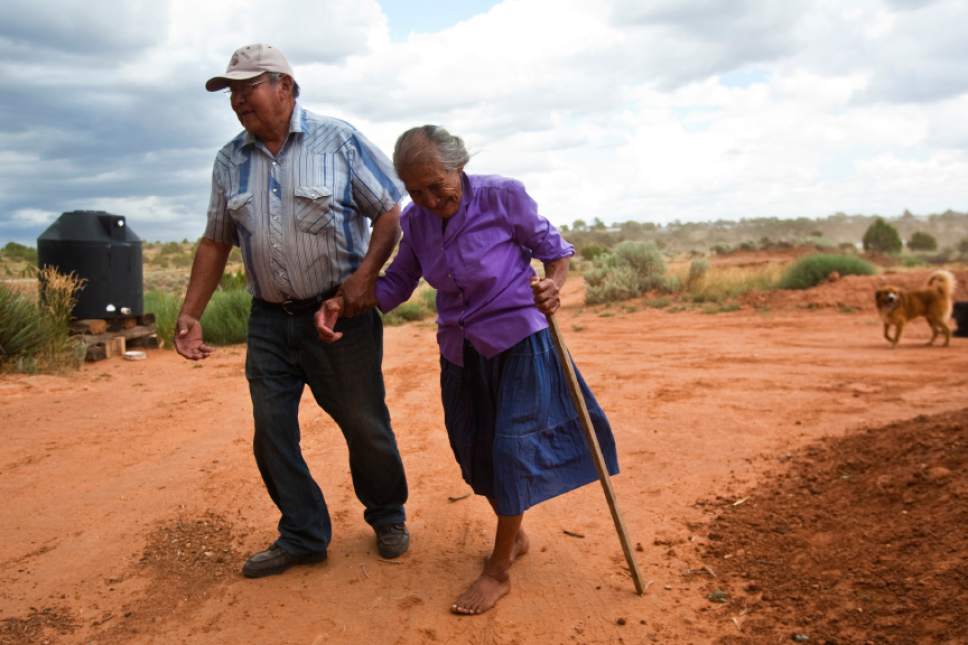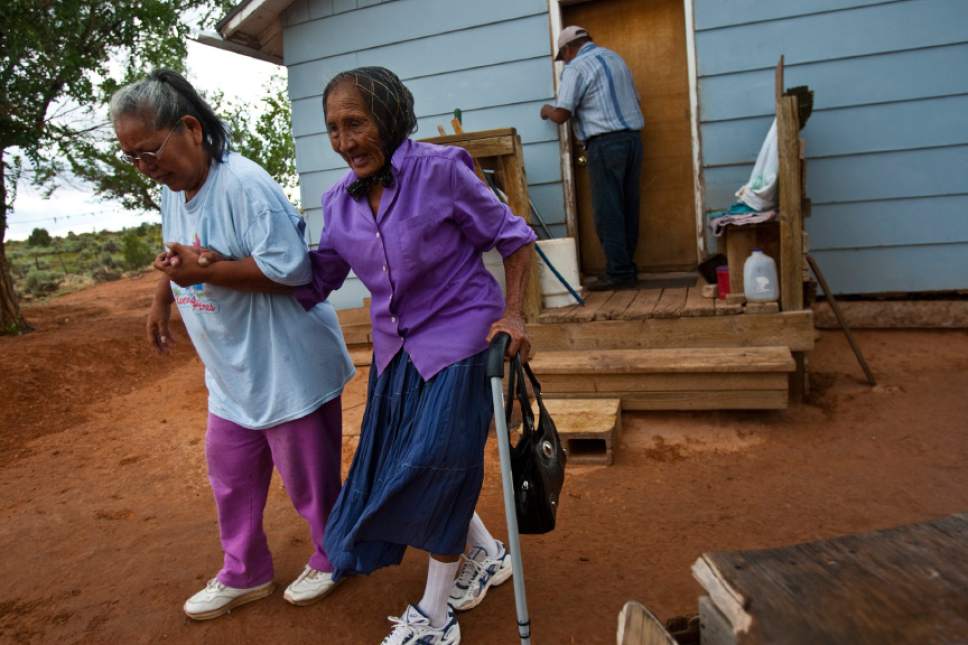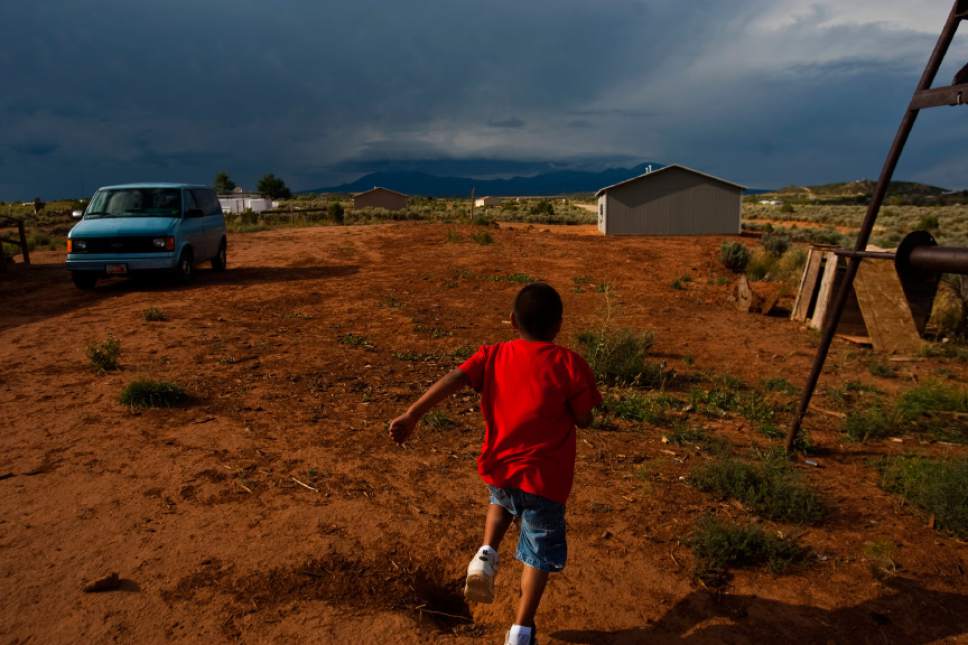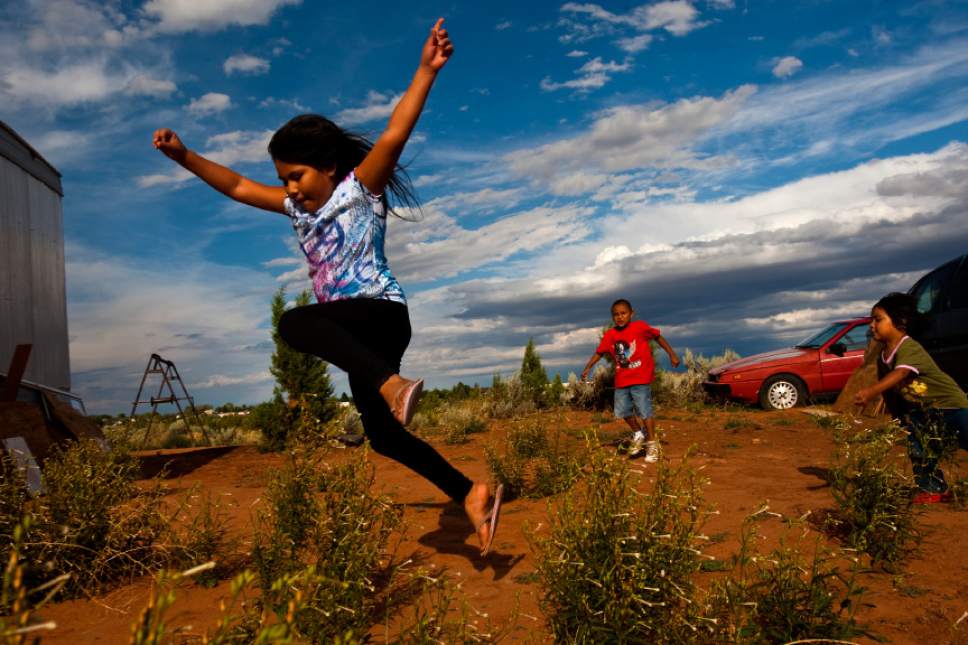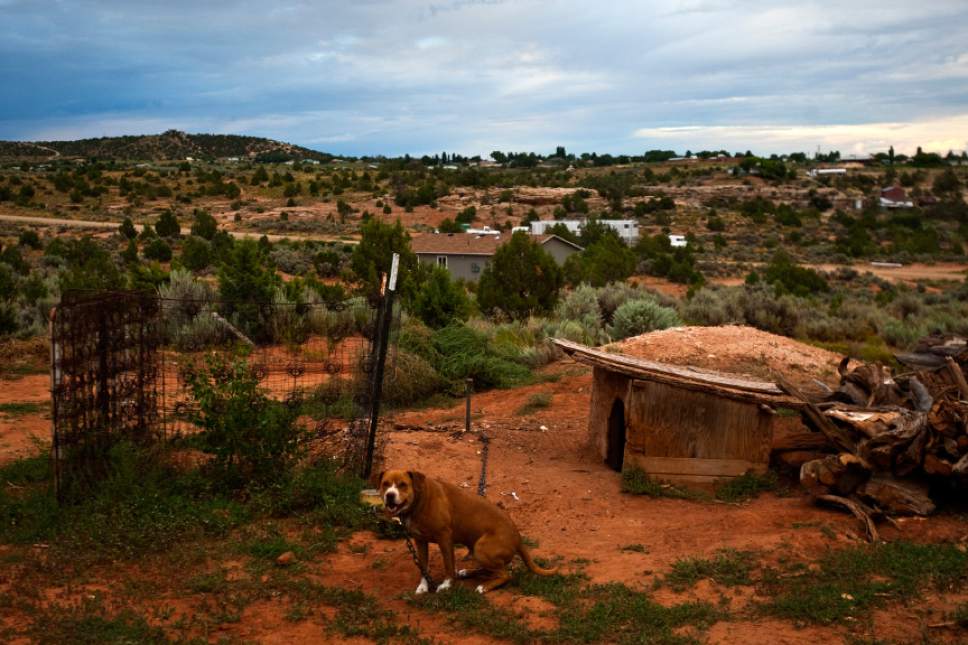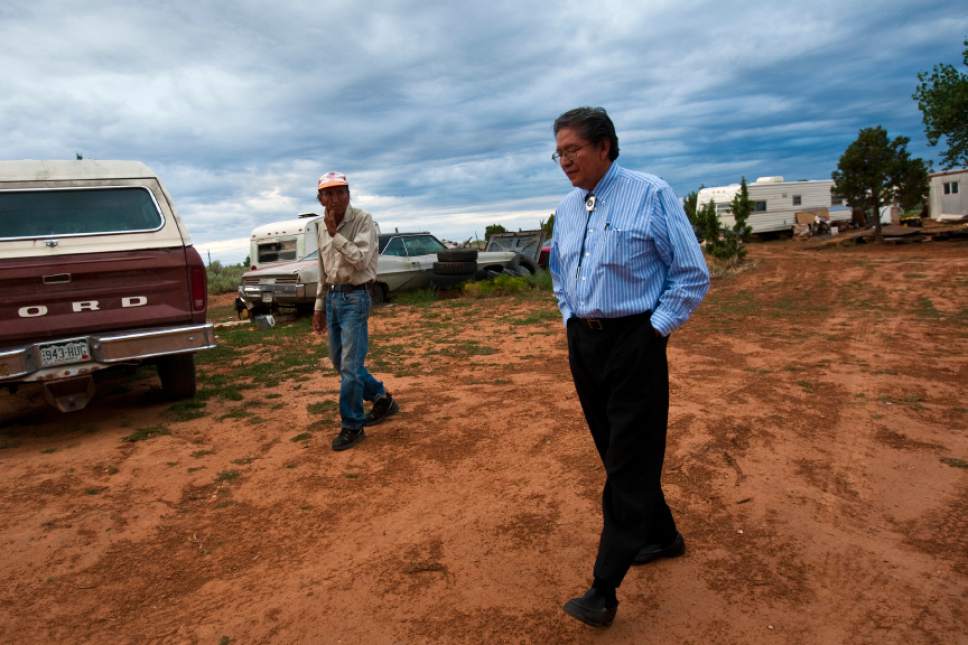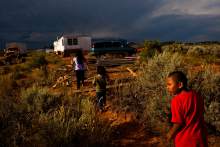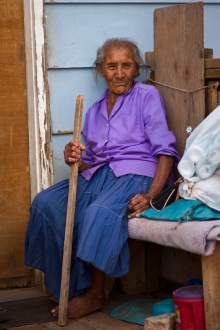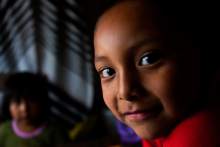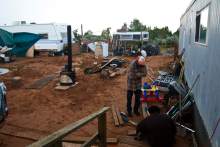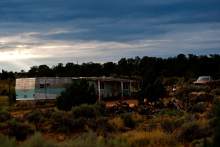This is an archived article that was published on sltrib.com in 2017, and information in the article may be outdated. It is provided only for personal research purposes and may not be reprinted.
Demographers puzzled by last month's U.S. Census update showing that Utah's San Juan County is the nation's fast growing are now throwing doubt on the surprise findings, arguing that the census is probably now recording Navajo residents who have not been captured in past surveys.
Evidence suggests that San Juan is home to many more American Indians than officially recognized, which could hold huge political and funding implications for the state's poorest county.
In March, the Census Bureau released adjustments showing that the population of the southeastern Utah county, home to the new and controversial Bears Ears National Monument, grew by nearly 1,200 people in 2016, indicating an improbable growth rate of 7.6 percent.
What changed was not so much the number of people calling San Juan home, but as how Navajos who live in remote areas near the Arizona state line were counted, according to Pam Perlich, director of demographic research at the U.'s Kem C. Gardner Policy Institute.
If true, the effects could be immense for the sparsely populated corner of Utah where a federal court has ordered county officials to redraw voting districts.
"A whole host of federal moneys are directed to counties linked to these numbers. Every person not enumerated costs the county thousands of dollars," said Perlich in a phone interview from Chicago where she presented her findings Tuesday.
"If you don't enumerate the populations, you aren't going to have the political representation, you don't have the funding, and you don't have the data to do proper planning," Perlich said. "This is an important issue for San Juan County and our Native populations."
Last month's census report indicated San Juan's alleged growth stemmed from net in-migration of 1,050 new residents, bringing its population to 16,895.
But Perlich and others, including Debbie Hatt of the Southeastern Utah Association of Local Governments, could find no evidence of such growth. School enrollment, church membership rolls and housing stocks were pretty flat.
"We are not seeing more kids on the buses, anything like that," Hatt said.
She said she wonders if the Census Bureau relies on flawed models for its interim population estimates between the once-a-decade surveys that are conducted with door-to-door head counting. Perhaps these estimates count the same person more than once, said Hatt. It can't be known for sure without access to actual Census data, which are currently not available.
Another possible explanation is that Native Americans who have previously not been counted had changed their behavior in ways that made them more visible to the models the Census Bureau uses to estimate rural counties' populations.
Perlich said Navajos are increasingly filing tax returns by tapping the Navajo United Way program known as Volunteer Income Tax Assistance, or VITA. Many Navajo live in remote places in Utah that have no addresses, so they use post offices in Arizona to conduct business.
"We think a couple hundred more filers complete [tax returns] in San Juan County for free rather than go to Arizona," said Perlich. "It could all be about where the tax returns were filed."
She vowed to keep investigating.
Others suspect the San Juan numbers surge reflects growing political engagement by Navajo, energized by the Bears Ears debate and other issues important to tribal members, such as schools and heath care.
"There is a new dynamic," said Gavin Noyes, executive director of Utah Dine Bikeyah, the grass-roots group that championed Bears Ears conservation proposals.
"Navajo are working so hard to get their voices heard and getting their needs met," Noyes said. "It's fascinating and important to get to the bottom of this."
The possibility that the census undercounts American Indians also comes as no surprise to U. political science professor Dan McCool and Leonard Gorman, executive director of the Navajo Human Rights Commission, which is leading federal suits against San Juan County that allege county officials are violating the Voting Rights Act at the expense of Navajos.
"This is a problem all over Indian Country, for a variety reasons," said McCool, who has testified in several voting-rights cases brought by various tribes including the Navajo.
"Some don't have physical addresses and live in scattered places," he said. "Census counters are reluctant to go to remote places when they can go to towns."
One of the Navajo lawsuits targets school board and county commission districting, alleging that district boundaries are unfairly set to dilute Navajo political influence. As a result, the litigation contents, American Indians will never secure majority representation on these boards, even though at least half the county's population is Navajo and Ute.
The districts in question have not been adjusted since they were established in 1986 despite growing evidence they are no longer equitably drawn, according to a ruling issued last year by District Judge Robert Shelby.
"The county has a difficult time grasping the need to make the necessary changes," Gorman said.
That may be because districts that more accurately reflect San Juan County's population could shift political power to American Indians and away from Anglos who have historically controlled local government. The possibility of uncounted Navajo in the county's southern district could bolster the tribe's case against the county.
Shelby concluded the county commission districts violate federal law and ordered them redrawn. According to his ruling, district lines have been maintained with the express intention of concentrating American Indian voters into District 3 centered around Bluff, the seat currently held by tribal member Rebecca Benally. Shelby found this district is 92 percent American Indian constituents, representing about three-fifths of the county's tribal population.
The county had claimed those district lines were fixed to comply with a consent decree to settle a voting-rights action 30 years ago that has ensured at least some Navajo representation on three-member county commission.
But Shelby rejected that reasoning.
"Keeping an election district in place for decades without regular reconsideration is unusual in any context," the judge wrote. "But when the asserted justification for this inertia is a racial classification, it offends basic democratic principles.
"San Juan County is not frozen in time, and neither are the interests and attitudes of its citizens," Shelby continued. "Even if the two largest voting groups within the county may find their political interests at cross-purposes, voters within the county may pursue those interests on an ongoing basis, and should not have to do so within unnecessary racial lines."
San Juan County has already begun the contentious process of drawing new district boundaries, but its efforts could be greatly complicated — if the census indeed counts more American Indians than previously recorded.
Brian Maffly covers public lands for The Salt Lake Tribune. Maffly can be reached at bmaffly@sltrib.com or 801-257-8713.
Twitter: @brianmaffly


